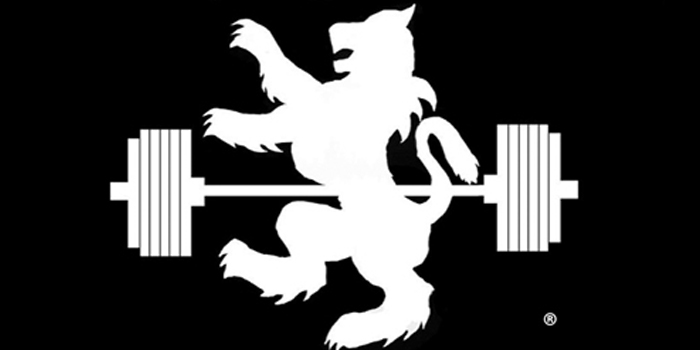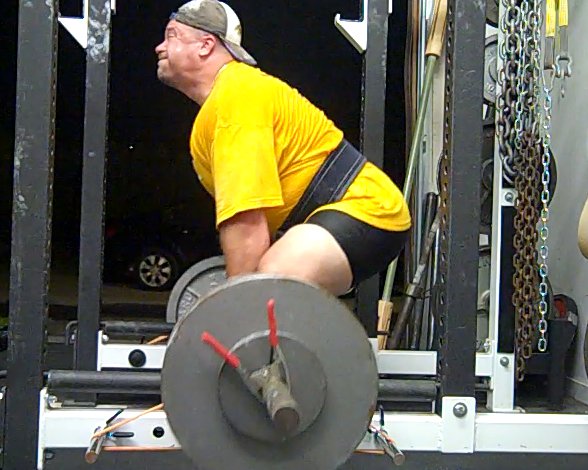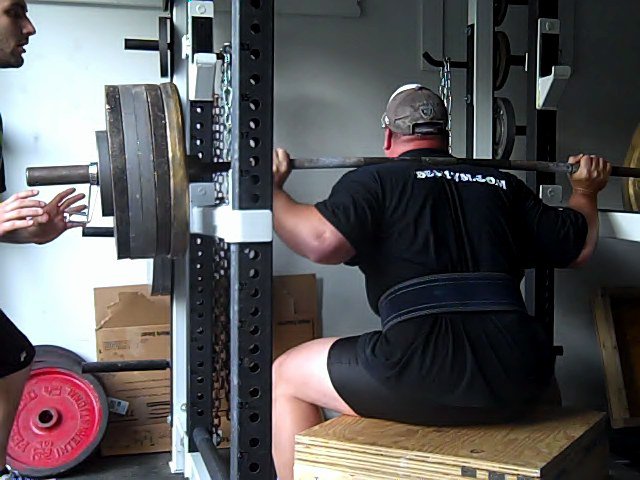
Balls to the wall, man
Balls to the wall
You’ll get your balls to the wall, man
Balls to the wall, balls to the wall
—Accept, the German Heavy Metal Band, “Balls To The Wall,” 1983
I’ve been suffering from horrible writer’s block for the better part of this year and the due dates for the Beast Reality Column seem to roll-in at a frenetic pace—faster than Dizenzo on speed-bench day.
Fortunately, I was recovering from such a block earlier this week when my Google Calendar mercilessly beckoned again, notifying me of the impending elitefts due date.
Not this time, Leedham; I’ve got it covered. No extension required!
I was seemingly in the catbird seat, yet shortly following my eureka-moment I found myself beset with self-doubt.
I had accidentally stumbled-upon Dave Tate’s blog post, Sometimes You Have To Do—What You Have To Do, which I devoured and enjoyed. Yet some of what Dave emphasized, at least on the surface, was contrary to the subtle point I wanted to make in my upcoming column. This put the concept for my column under psychological-siege.
Ultimately, I was able to decide (rationalize) that our views were not quite diametrically opposed. I was able to persevere and complete the column I hope you will read if you’ve stuck with me this far.
Experienced Enough to Let Go
I’ve always considered my arm wrestling ability to be sub-par, which is to say that relative to my overall strength, I’ve always believed I should be better than I am. Although I’ve never competed, outside of random barroom encounters during my younger days, I find the sport fascinating and have recently become interested in watching video of high-level matches. There is more technique to the sport than initially meets the eye and it’s rare that a veteran of the sport can simply be over-powered.
I’m far from an expert on the subject, but became aware of John Brzenk after learning of and watching the “Pulling John” documentary, which details a segment of his impressive career in arm sports. I found his story fascinating and his prowess and persistence in the sport incredibly impressive.
Brzenk is a professional Armwrestler from the United States. He began competing at the age of sixteen and is currently fifty-one years old—still competing as far as I am aware. Brzenk was named by the Guinness Book of World Records as the "Greatest Armwrestler of All Time,” and his accomplishments and titles are far too many to expound-upon here.
Recently, I was watching a 2015 heavyweight match between Brzenk and Devon Larratt, a veteran of the Canadian Special Forces and another of the top armwrestlers in the world. The match was a “Best of Three." In the first round Larratt fouled, causing the referee to apply the strap to prevent their grip from coming apart again. Shortly thereafter, Brzenk found himself at a severe disadvantage. As soon as he felt his hand and wrist were compromised, he allowed himself to let go and he lost the round (i.e., he stopped resisting/pulling). While they were engaged, the color commentator stated, "Even if Larratt can finish, he won’t do so. He’ll just wait it out and try and burn Brzenk."
However, Brzenk knew from experience he would have a better chance of taking the best of three if he refused to allow Larratt to wear him out in a round during which he was almost certainly going to come-up short. Sure enough, Brzenk was able to win the next two rounds and prevail in the overall match.
Brzenk was experienced enough to just let it go.
I should have given up earlier because he [Larratt] has tremendous endurance and I knew I wasn’t going to be able to pull him back through.
—John Brzenk
The "Balls to the Wall" Paradox
Back in 2007 I was training my legs alone in my basement gym. I used to perform the box squat in a power rack using a massive old tree stump in place of a box. I remember the training session wasn’t going very well; the weights felt exceptionally heavy and were moving slowly. My body just didn’t feel right, but I continued to push through.
While performing one of my heavier sets, straining during the concentric phase (the ascent) of the forth repetition I felt a sharp pop in the middle of my chest.
I’ve blown my aorta.
That’s literally what I thought during the strain of the repetition; I’m thirty-seven and I’ve blown my fucking aorta box squatting.
So what did I do? I did what any young and stupid powerlifter would do: I dipped-down for another two repetitions. I was being young and foolish. Somehow, despite the mysterious chest pop, I managed to walk away from the training session unscathed. I was lucky that time, but on most of the occasions when there was sharp pain associated with my normal work sets, I wasn’t as fortunate. Many times I did damage that derailed my training further than if I’d just walked-away from the set or the exercise.
When I was less experienced (and probably less confident in my programming) on many occasions I made a poor decision during a training session and unlike the aforementioned squat session, I wasn’t able to avoid injury.
When I reflect on some of my early training experiences, I believe I was so laser-focused on what I needed to accomplish during a session that I couldn’t fathom cutting it short by skipping an exercise that just didn’t feel right.
I remember one evening, when I was actually a more seasoned trainee, I was doing shoulder work and my trainer wanted me to finished the session with dumbbell Cuban presses (i.e., dumbbell muscle snatches), which heavily work the external rotators. I’d never done these before and immediately felt a sharp discomfort in my right shoulder. I foolishly worked through the pain to complete the prescribed number of sets and repetitions.
For my efforts, I was rewarded with severe shoulder pain for the next several weeks, pain which prevented me from being able to perform any maximum effort upper body training.
Unlike Brzenk, I wasn’t experienced enough to just let it go.
To be clear, I’m not referring to making the decision to back-off from training for a day, a week, or longer if necessary—although that is certainly a relevant separate topic. I am explicitly referring to situations during which the training repetitions are producing acute pain in a joint or other area of the muscle.
Uncover the Physical Issue During the Warm-Up
One training mistake I’ve observed with some frequency is the typical trainee performs few if any warm-up sets (and little, if any, general warm up). In my experience, this is especially true as far as young men are concerned, particularly during high-school group training where often the prevailing "wisdom" is that warming-up is for the weak.
I’ve watched countless guys start with 135 pounds on the bench press, barely complete five to eight extremely shaky repetitions, and immediately jump-up in weight to perform a half-rep, back-twisting, toe tapping, garbage set.
Warming-up is a sign of training intelligence, but more germane to this specific topic, and more specifically, I’m a big fan of performing the first warm-up set (or two) with just the bar for 10—15 reps.
There are several benefits to warm-up sets beyond the scope of this article, but one of the often overlooked benefits is that if a trainee is going to discover an acute pain issue, it’s a preferable situation to make that discovery with 45 pounds across their shoulders versus 315 pounds.
Do What You Have to Do
The bottom line, as I discussed in "The Irrational Immediate Gratification Society" is that it takes years of dedicated training to build a strength foundation and make significant and consistent gains. In order to maintain the consistency required for steady progression, you have to do what you have to do to remain healthy.
Train hard — train smart, too. Learn to discern the difference between the good pain associated with proper resistance training versus acute pain, which reveals that there may be something physically wrong and can lead to serious injury and months on the trainer’s table trying to regain the health required to work for productive gains.












